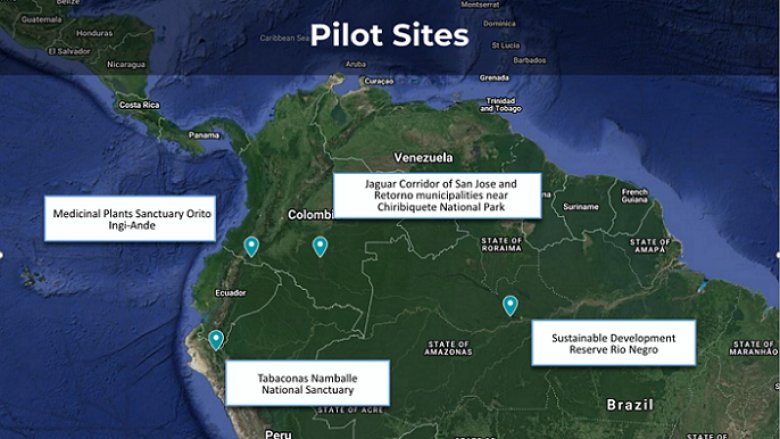One of the best, easiest, and most effective ways to observe wildlife in their natural habitat is not always through the naked eye��but through images and video captured by camera traps. These small and powerful tools have become widely popular, including in the Amazon, and provide an excellent means to improve the surveillance and monitoring of wildlife populations.
Camera traps are easy to set up and can capture, via a photograph or video, a wide diversity of key terrestrial species triggered by a sensor when an animal moves past. If designed and deployed correctly, camera traps are a cost-effective way to quickly collect many images��one single camera can often collect hundreds or thousands of images in the span of a few weeks. Despite the volume of camera trap data collected in regions like the Amazon, most of it remains ��invisible�� because these data are voluminous, difficult to organize, analyze, synthesize, and share with others. Generally, local communities and non-experts lack the capacity and know-how to access and use the analytical tools to process the collected data. Nonetheless, if correctly used, the potential for camera traps is huge, as the resulting data can be used to measure ecosystem health and monitor if conservation activities are delivering the expected results in terms of species diversity and abundance.
Camera traps can also play an important role in efforts to control illegal wildlife trade and monitor species that are at high risk to transmit disease and not easily monitored by casual observation. In the context of COVID-19 travel restrictions, the need to promote community monitoring mechanisms with the use of technology was also brought to the forefront, which not only reduces the necessity for external technicians to travel and lowers the carbon footprint, but importantly builds local capacity.
Responding to the challenges to use and process the information coming from camera traps, the Amazon Sustainable Landscape (ASL) program��s regional project identified the need to design and pilot an analytical tool to gather, organize, visualize, and analyze information captured by camera traps within its area of intervention and enable conservation management-related decision making. The ASL, financed by the Global Environment Facility (GEF) and led by the World Bank, aims to improve integrated landscape management and ecosystem conservation in priority areas of the Amazon in Bolivia, Brazil, Colombia, Ecuador, Guyana, Peru, and Suriname.
To help stakeholders make the most of these data, build capacity, and exchange knowledge, the ASL brought Conservation International (CI) on board as one of the organizations leading (WI)��a cloud and artificial intelligence-enabled platform built by CI, Wildlife Conservation Society (WCS), WWF, and other partners to facilitate the processing, management, and analysis of camera trap data. The resulting key product, the , was developed within the WI platform for the ASL to gather and facilitate the processing, management, and analysis of data from the cameras collected by its national projects. The tool provides users an easy way to explore the data collected through camera traps, obtain essential information on biodiversity, and run estimates of several analytics, including comparing the presence of species within and outside of a protected area.
The activity funded by ASL helped to strengthen capacity of project stakeholders (local communities, environmental authorities, technicians, and park rangers) to collect and use camera trap data, in conjunction with other relevant data, and to evaluate biodiversity outcomes achieved through their interventions. The activity included virtual and in-person training workshops supported by WCS and WWF in four pilot sites in Brazil, Colombia, and Peru. Materials to facilitate training were prepared including a comprehensive step-by-step guide to learn how to use the WI platform in , , and , (in Spanish), as well as specific guides for some of the sites like and .



